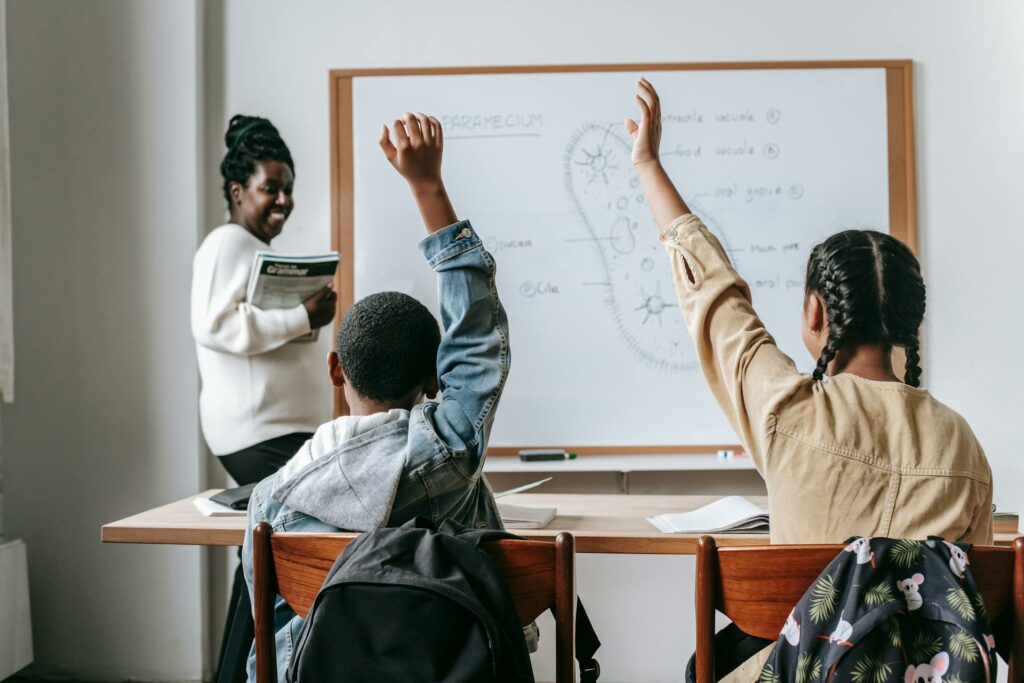Improving student engagement in the classroom is a crucial aspect of creating a conducive learning environment. Open Minds Campus understands the importance of keeping students engaged and motivated to participate actively in their education. One of our primary goals is to foster an environment where students are actively engaged in their learning. When students are engaged, they are more likely to participate, retain information, and ultimately succeed academically. However, in today’s fast-paced world filled with distractions, capturing and maintaining student engagement can be challenging. At Open Minds Campus, we are committed to implementing innovative strategies to enhance student engagement in the classroom. Here are some effective approaches:
Interactive Teaching Methods:
Utilise interactive teaching methods such as group discussions, problem-solving activities, debates, hands-on activities, and multimedia presentations. These methods encourage active participation and help students retain information better. These methods not only encourage students to actively participate but also promote critical thinking and collaboration skills.
Create a Supportive Learning Environment:
Students are more likely to engage in the learning process when they feel comfortable and supported. Instructors can foster a positive classroom climate by building relationships with students, providing constructive feedback, and creating opportunities for peer collaboration and support. A classroom culture that values diversity, inclusivity, and respect for different perspectives should be established. And fostering a supportive learning environment where students feel comfortable expressing their thoughts and opinions without fear of judgment.
Offer Choice and Autonomy:
Providing students with choices in their learning can increase motivation and engagement. This can involve offering different topics for projects or assignments, allowing students to select reading materials that interest them, or incorporating flexible learning pathways such as providing students with the freedom to choose topics, projects, or assignments that align with their interests and learning goals. Providing autonomy empowers students to take ownership of their education and increases their motivation to engage with the material.
Foster a Collaborative Learning Environment:
Encourage collaboration among students by assigning group projects, peer-to-peer teaching, and cooperative learning activities. Collaborative learning promotes teamwork, communication skills, and a sense of community within the classroom.
Incorporate Technology:
Integrate technology into the classroom to make learning more interactive and dynamic. Use educational apps, online simulations, and interactive whiteboards to capture students’ interest and cater to different learning styles. In addition, using interactive multimedia presentations can make learning more interactive and accessible. Lastly, incorporating tools such as clicker systems or polling software can encourage real-time participation and feedback.
Provide Real-World Relevance:
Connect Learning to Real-World Applications: Making connections between classroom content and real-world scenarios can increase relevance and engagement. Facilitators can incorporate case studies, guest speakers, or field trips to illustrate how course material applies to everyday life or future career paths. Showing students, the practical implications of their learning can enhance motivation and retention.
Make Learning Enjoyable:
Incorporate elements of fun and creativity into lessons to make learning enjoyable and engaging for students. Use games, storytelling, and interactive exercises to capture students’ attention and stimulate their curiosity.
Use Positive Reinforcement:
Acknowledge and reward students for their active participation and contributions to class discussions. Positive reinforcement, such as praise, and certificates, reinforces desirable behaviours and encourages continued engagement.
Encourage Reflection and Feedback:
Providing opportunities for students to reflect on their learning experiences and receive feedback can promote metacognition and continuous improvement. Facilitators can incorporate reflective writing assignments, peer reviews, or self-assessment activities to encourage students to think critically about their learning process and set goals for growth. Offer timely and constructive feedback to students on their performance and progress. Feedback should be specific, actionable, and focused on helping students improve their skills and understanding.
Continuously Evaluate and Adapt:
Regularly assess student engagement levels and gather feedback from students to identify areas for improvement. Be flexible and willing to adapt teaching strategies based on student needs and feedback.
Open Minds Campus incorporates these strategies to enhance engagement in the classroom and create a vibrant learning environment where students are motivated to actively participate and excel academically.



